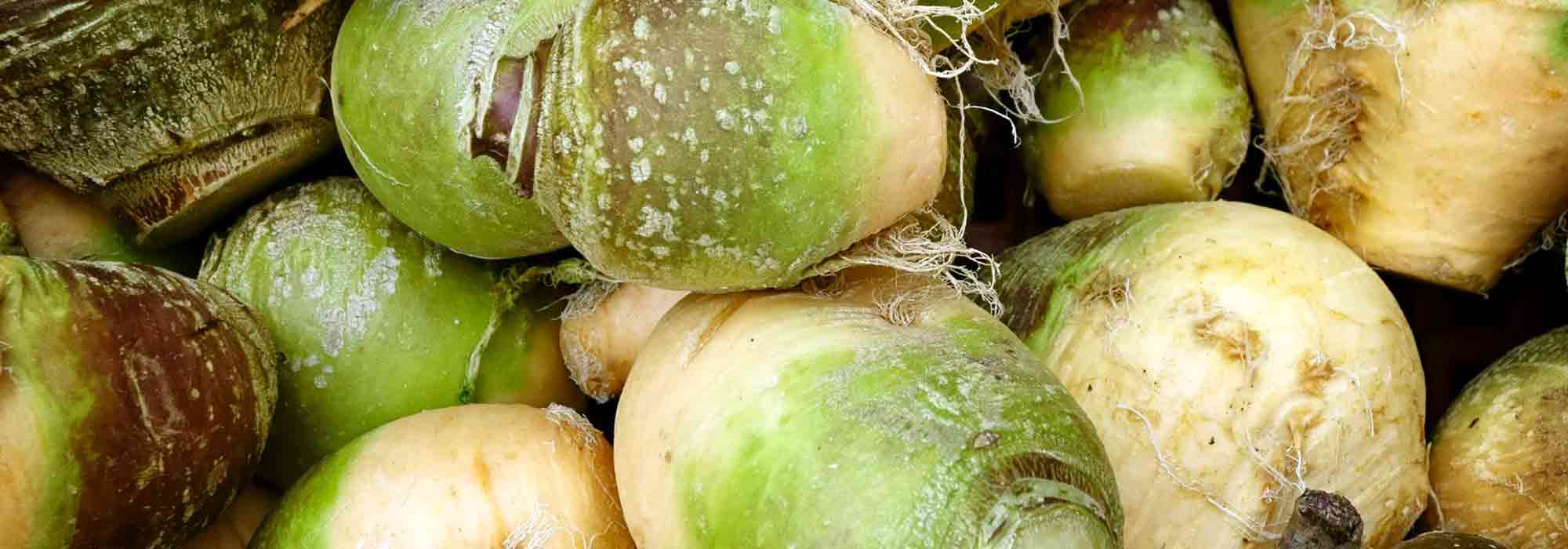
Rutabaga: sowing, cultivation, harvest
Contents
Rutabaga in a nutshell
- Rutabaga is a very old root vegetable with dense flesh, highly nutritious
- Its tuberised and swollen root can be consumed cooked, or raw and finely sliced in salads
- It is the result of cross-breeding between cabbage and turnip, but its taste is finer than the latter, marked by a pronounced nutty flavour
- Rutabaga is also used as a forage plant to feed livestock
- Easy to cultivate in sunlight, in cool, well-drained soil, rutabaga is hardy and thrives in cold, damp climates
- In Ireland and Scotland, rutabaga roots are hollowed out to make Halloween lanterns
A word from our expert
Ancient, highly productive vegetable that appeared in Scandinavia at the end of the Middle Ages, the rutabaga, Brassica napus var. napobrassica, is one of those forgotten species, like the Jerusalem artichoke, that has suffered from its reputation as a “war vegetable.” Its fine taste, more subtle than that of the turnip and cabbage, deserves to be rediscovered.
The rutabaga is the result of a cross-breeding between Brassica oleacea (ancestor of cabbage) and Brassica napus (the turnip). It is mainly consumed cooked in the same way as potatoes, or in winter stews and casseroles to which it adds its interesting flavour with pronounced nutty notes. Rich in fibre and potassium, the turnip-cabbage is a very nutritious plant that offers numerous medicinal benefits.
The turnip-cabbage thrives in the vegetable garden in a sunny position, away from other brassicas. Hardy and easy to grow, it does require a well-drained, constantly cool and moist soil. It is sown under cover or in place in spring for an autumn harvest, sometimes in winter.
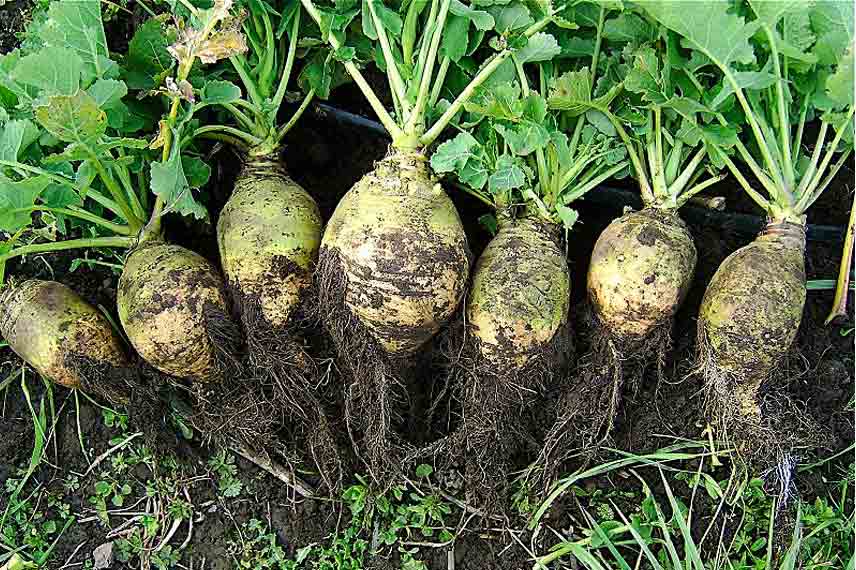
Rutabaga nadmorska
Biennial, it has a melliferous flowering that attracts pollinators. However, this usually only occurs during the second year of rutabaga cultivation.
Here are all our tips on this vegetable plant with exceptional nutritional qualities.
Description and Botany
Botanical data
- Latin name Brassica napus var. napobrassica
- Family Brassicaceae
- Common name Swede, Chinese cabbage, Swedish turnip, Lapp cabbage
- Flowering June
- Height 30 to 50 cm
- Exposure sunny
- Soil type well-drained, deep, fertile, rich and humus-bearing
- Hardiness -10°C to -20°C
The swede, Chinese cabbage, Lapp cabbage, or Swedish turnip is a root vegetable that is cultivated as a nutritionally rich vegetable plant. It belongs to the large family of Brassicaceae (formerly known as Cruciferae) such as turnips, cabbages, radishes, mustard, and wallflower. The swede is native to Northern Europe.
More than forty varieties of swedes are listed in the European catalogue, and three in the French catalogue. Among the most well-known round-rooted varieties on our plates, we find the Champion swede, the Wilhelmsburger swede, the Saint-Marc yellow, or the Blanc d’Aubigny. Although some varieties are often reserved for livestock fodder, all are actually excellent for humans when they are young.
Brassica napus var. napobrassica is a biennial plant considered a root vegetable, although its edible part is more of a hypocotyl (the part of the stem located below the cotyledons). This thickens to form a pear-shaped bulb averaging 12 cm in diameter, swollen and almost completely hidden in the soil, with only the collar emerging from the ground. The edible part of the plant is generally coloured green or red on its upper half.
The deciduous foliage of the swede grows in a rosette at the top of the hypocotyl. The leaves are long and deeply lobed, very similar to those of the turnip, although they are not pubescent (hairy) unlike the latter.
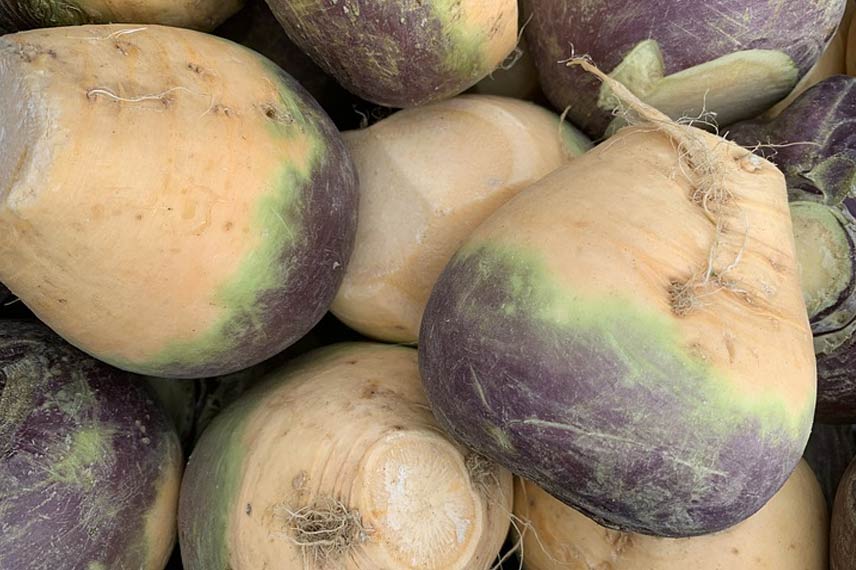
A melliferous plant, the flowering of the swede occurs generally during the second year of cultivation. It then produces small yellow petalled flowers, gathered in terminal clusters.
Rich in vitamin C, fibre, and minerals, the swede offers numerous nutritional benefits.
Read also
Conserver les légumes du potagerMain varieties of swedes
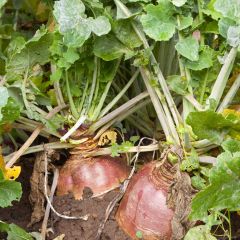
Champion Rapeseed (yellow with red collar) - Vilmorin seeds - Brassica napus
- Height at maturity 30 cm
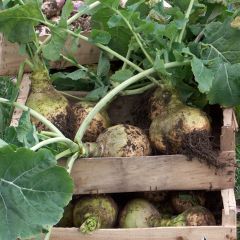
Wilhemsburger Rapeseed (with green neck) - Vilmorin seeds - Brassica napus
- Height at maturity 30 cm

Wilhemsburger Rapeseed (with green neck) - Vilmorin seeds - Brassica napus
- Height at maturity 30 cm
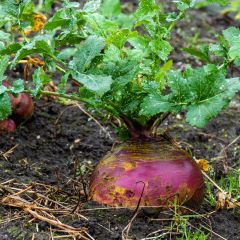
Swede Magres - Rutabaga
- Height at maturity 30 cm
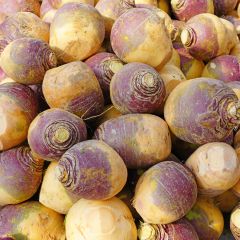
Swede Brora - Rutabaga
- Height at maturity 30 cm
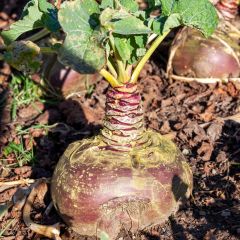
Swede Tweed F1 - Rutabaga
- Height at maturity 30 cm
Discover other Swede
View all →Available in 1 sizes
Available in 1 sizes
Available in 1 sizes
Available in 1 sizes
Available in 1 sizes
Cultivation, care and maintenance of swede
While it tolerates partially shaded situations, rutabaga thrives in sunny exposures.
A root vegetable ideal for cold and humid climates, the Siamese cabbage is a hardy vegetable plant capable of withstanding frost and temperatures around -20°C, provided that the soil is well-drained. It prefers deep, fertile, rich, and humus-bearing soil. On the other hand, it is better to avoid cultivating it in poor, chalky soil.
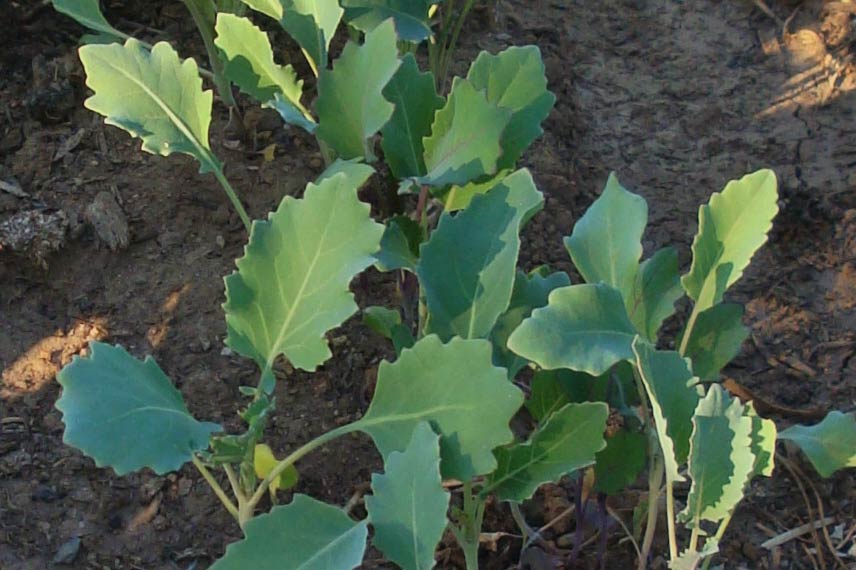
Rutabaga cultivation © Eileen Kane – Flickr
Easy to grow once established, rutabaga is a plant that requires little maintenance and care to thrive. Even with minimal care, rutabaga easily reaches ripeness.
Rutabaga is water-hungry. Watering should be regular, but the soil must never be waterlogged. Mulching the base of the swede with leaves or dried grass clippings helps to maintain soil moisture and keeps it cool during the summer.
Remember to hoe and weed regularly around your rutabaga plants to allow water to penetrate the soil well and to limit the proliferation of weeds.
For rutabagas left in the ground for part of the winter, hill up the base in autumn and apply a mulch of leaves to protect it from frost.
When and how to sow swede?
When to sow?
Sowing of swede is carried out under cover in early spring (March-April), or directly in place at the end of spring, beginning of summer (May to July).
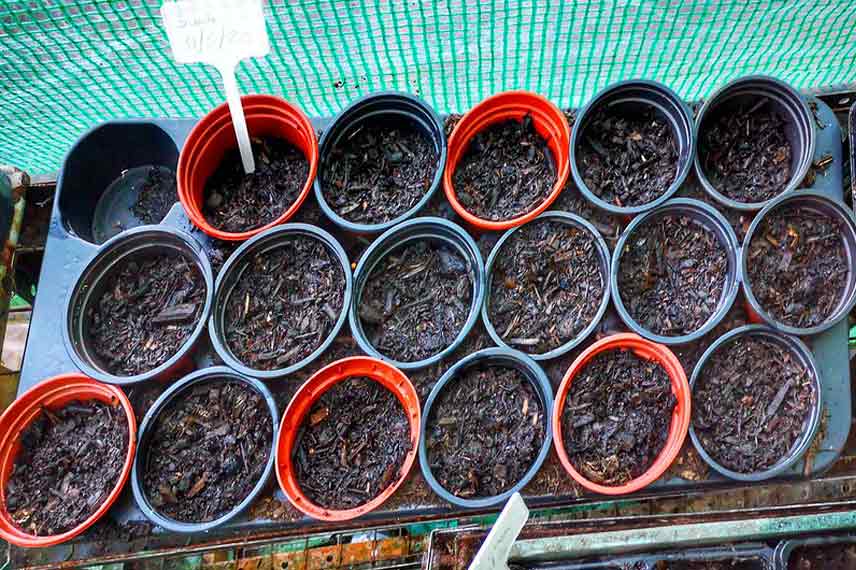
Sowing swede © Hefin Owen – Flickr
Sowing under cover
- Sow under cover from 15°C
- Sow in trays or in buckets filled with a rich, well-drained substrate
- Bury the seeds of swede 1 to 2 cm deep
- Lightly cover the seeds
- Firm and water with a fine spray to lightly moisten the substrate
- Germination occurs in about 10 days
- Thin out the young plants to 7 cm when they have 2 to 3 leaves
Transplanting young plants sown under cover
The sowings made under cover are transplanted in place between the months of May and June.
- Choose a location with sunny or partially shaded exposure
- Transplant the young plants with 3 or 4 leaves
- Space the plants 30 to 40 cm apart in all directions
- Water regularly without waterlogging the soil
- Mulch the bases to retain soil moisture and freshness
- Hoe regularly
Sowing in place
- Preferably choose a sunny location
- Turn the soil to a depth of 20 cm
- Amend the soil with potting soil
- Sow in rows every 30 cm approximately in the same rank
- Push the seeds 2 cm deep
- Water with a fine spray without waterlogging
- Germination occurs in about ten days
Harvest, storage, and uses of swede
Harvest
Rutabaga is harvested as needed from late summer to autumn (September to November), and sometimes even into the heart of winter (February). It is important to note that swede is much tenderer and tastier when harvested before full ripeness. Proceed by lifting the plants, preferably in dry weather.
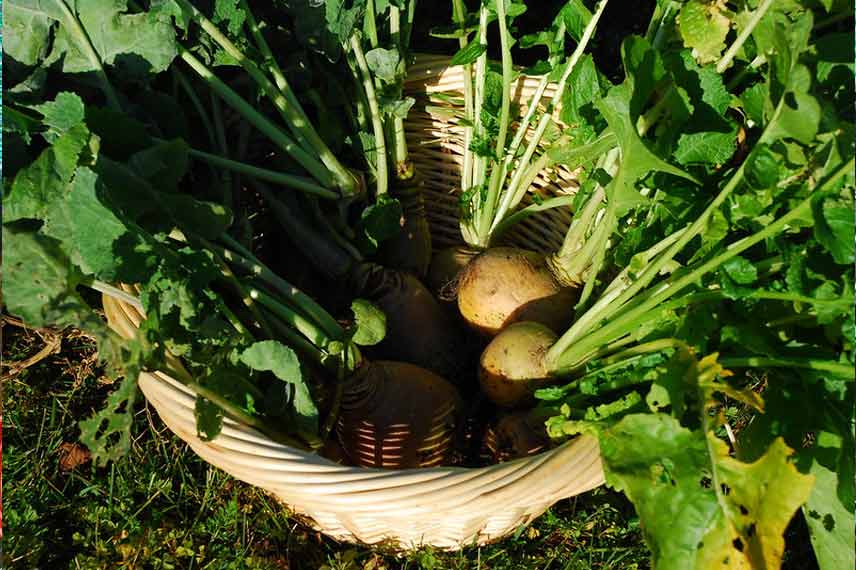
Harvesting rutabaga © Johnathan Nightingale – Flickr
Note: rutabaga is ready to be harvested when it is firm and heavy. Yields are estimated at around 4 kg per m².
Storage
Rutabaga is a hardy root vegetable that can be stored in the ground until February. However, harvesting can become more difficult in the event of prolonged frost. Winter rutabaga can be left in the ground until March provided it was sown as late as possible.
Once harvested, it is best stored in a silo in a cellar, buried in sand or turf at a temperature not exceeding 10°C. It can also be kept in a rather cool and dark room.
In the refrigerator, swede keeps for a few days in the vegetable drawer.
Uses
- Forage use
Forage varieties of rutabaga are used for feeding cattle and sheep in pasture. It is particularly appreciated by horses. Only the foliage and the above-ground part of the hypocotyl are used.
- In cooking
Lighter than turnip, rutabaga is particularly valued in cooking for its pronounced nutty flavour.
It is most often cooked, just like potato, in the form of mash, gratin, or even fried.
Siamese cabbage also pairs very well with winter vegetables such as turnip and carrot. It cleverly complements traditional winter stews, especially pot-au-feu.
Note: the thickness of rutabaga flesh makes it difficult to peel with a peeler. It is therefore preferable to use a knife rather than a vegetable peeler.
- Medicinal properties
Swede is a vegetable known to be very rich in fibre and potassium. This composition makes it a good diuretic and may reduce the risk of hypo-citraturia. The diuretic properties of rutabaga may help combat high blood pressure and heart failure.
Siamese cabbage is also credited with laxative, digestive, and remineralising properties.
Note: rutabaga, like all plants of the genus Brassica, may promote the appearance of simple goitre (benign enlargement of the thyroid gland).
Diseases and potential pests of swede
Swede can be subject to various diseases.
- Alternaria leaf spot refers to a series of fungal diseases caused by fungi of the genera Alternaria or Ulocladium.
- Cabbage root maggot, a cryptogamic disease caused by a myxomycete protist, a microscopic fungus from the family Plasmodiophoraceae.
- Downy mildew, a cryptogamic disease caused by a pathogenous fungus, Phytophthora infestans, which primarily develops in humid conditions between 17 and 20°C.
- Powdery mildew, also known as white rot or white disease, refers to a series of cryptogamic diseases caused by the asexual form of certain ascomycete fungi.
On the pest side, swede can be attacked by various harmful insects such as flea beetles, gall midges, weevils, cabbage flies, cutworms, and cabbage whites.
Gastropods, slugs and snails, are also fond of swede leaves.
To protect your swedes from the risks of diseases and pests, some preventive measures can be taken:
- To combat cabbage fly or flea beetles, consider removing the roots from the soil at the beginning of August.
- Rotate crops in the vegetable garden to avoid powdery mildew and root rot.
- By regularly weeding and mulching the soil, you will also prevent the proliferation of certain pests.
Rutabaga propagation
As we have seen previously, the propagation of swede is carried out by sowing under cover between March and April, or directly in place between May and July, when all risk of frost has passed.
It is better to purchase swede seeds from the market. Indeed, the harvest of seeds is particularly complex in the case of turnip, as it is a biennial plant that will only flower if you leave it in the ground all winter.
Pairing swede with the vegetable garden
Rutabaga enjoys the company of many other vegetable plants, such as lettuces, carrots, celery, mint, broad beans, or even beans.
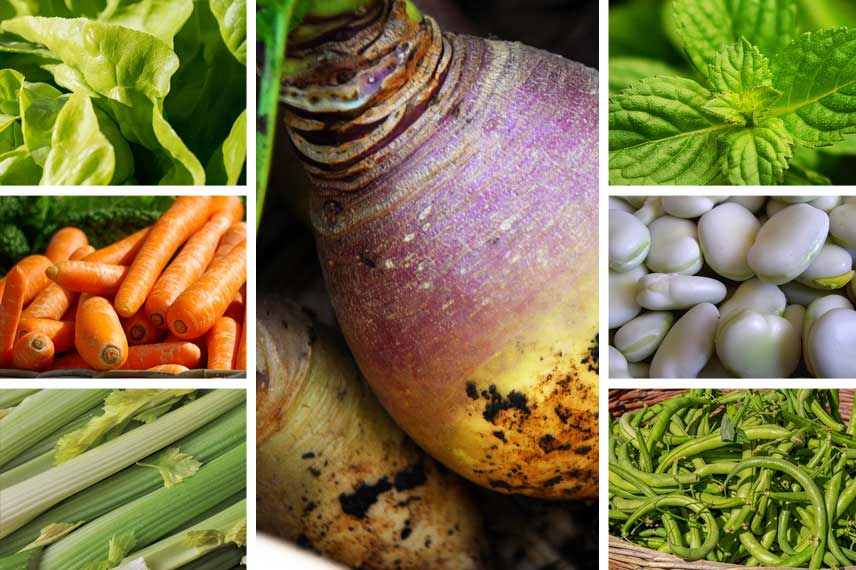
1.Lettuce 2.Carrots 3.Celery 4.Rutabaga 5.Mint 6.Broad beans 7.Beans
On the other hand, to avoid any potential mineral imbalance in the soil, avoid the proximity of other Brassicas (radishes, turnips, cabbages, broccolis…). Likewise, do not sow your rutabagas where you previously cultivated other Brassicas. It is also advisable to wait a few years before replanting rutabagas in the same spot in your vegetable garden.
Useful resources
- To go further, also check out our file on the preservation of vegetables from the garden.
- Discover more ancient vegetables to grow in the garden.
- Learn more about the association of crops in the garden.
- Finally, find a selection of swedes available for sale on Promesse de fleurs.
- Subscribe!
- Contents




































Comments